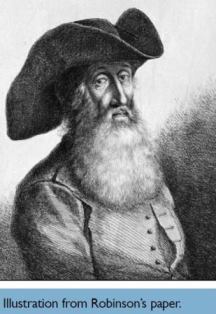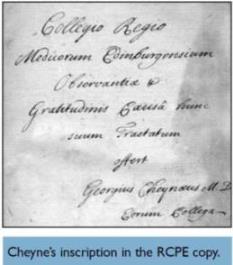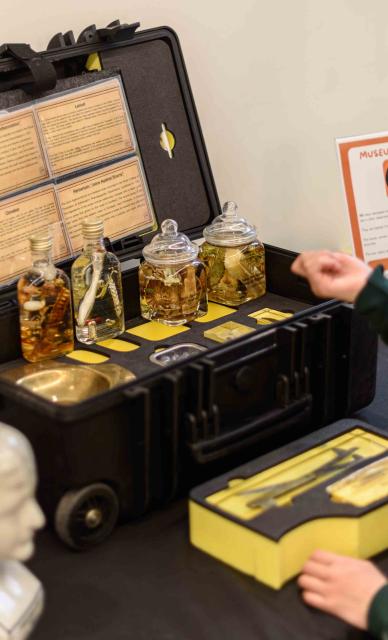Support us
As a charity we rely on your donations to fund our free exhibitions, school activities and online resources
Empowering medical excellence, shaping healthcare futures.

Dr Tancred Robinson was a Fellow of the Royal College of Physicians of London. He was a friend of Hans Sloane and a physician in ordinary to George II. Robinson wrote that ‘tis to be wished that particular enquiries were made and answered concerning the temperament of this man’s body, his manner of living and all other circumstances which might furnish any useful instructions to those who are curious about longevity.’

This is very possibly the earliest work written in English solely on geriatrics. Floyer recommends the use of hot or cold baths depending on the size and constitution of the patient. He also covers diet therapy for the elderly and stresses the importance of accurately recording the pulse rate.
Cheyne gives his rules for a healthy life, covering diet, exercise and sleep. Two of his recommendations for old age are to avoid ‘the injuries of the weather’ and to lessen the amount you eat as you grow older. In 1724 he was made an Honorary Fellow of the Royal College of Physicians of Edinburgh. The College Library copy is an inscribed presentation copy from the author dated 2 July 1724.
An English physician and community worker, van Oven was born in London where he practised all his life. He had an extensive clientele among the Jewish community. ‘It will readily be seen that a vast number of those who attained a very old age passed through life remarkably free from disease; many never were ill, never took medicine, retained the powers of body of mind until the latest period, and seemed to sink suddenly into the arms of death without passing through any period of decay and decrepitude.’
In an appendix, van Oven provided a series of tables, showing the names of 1,500 men and women who had attained ages from 100 to 110; 331 between 110 and 120; and 47 who were said to have exceeded even that age. Many of them had biographical details and there are references to books or newspapers. This was an early statistical approach to longevity.

Support us
As a charity we rely on your donations to fund our free exhibitions, school activities and online resources